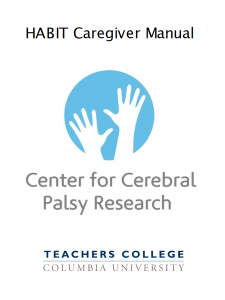Improving Hand Function After Hemispherectomy
Hand-Arm Bimanual Intensive Therapy (HABIT) is a new type of physical therapy intervention developed at Columbia University. Its goal is to improve the use of both hands in daily function.
How is HABIT different from constraint-induced movement therapy (CI)?
Like constraint-induced movement therapy (CI), HABIT requires 90 hours of intensive therapy. It is performed in group settings where the focus is having fun.
CI therapy focuses on using one hand only. HABIT is different than CI because it focuses on improving the ability to use both hands together. Most activities we do require both hands (catching a ball, typing, cooking.)
There is new evidence that HABIT is effective in children after hemispheric surgery. In this recent research study funded by the Pediatric Epilepsy Surgery Alliance (former The Brain Recovery Project), children who received HABIT therapy had significant improvements in their bimanual hand function.
Is HABIT a child-friendly therapy?
Yes. During CI, children can get very frustrated when their “good arm” is constrained. Some children lose skills because of frustration during CI therapy.
Also, a child who has other orthopedic impairments or cognitive delays are at greater risk of falling and injuring their “good arm” during serial casting used in CI. This is not an issue in HABIT because serial casting is not used.
Where can my child receive HABIT?
There are currently no facilities in the United States that provide true HABIT. If your child’s physical or occupational therapist would like to try HABIT with your child, they should read this paper which describes how to do it.
Can I try HABIT at home?
Yes! We have a manual for you below which describes how you can try HABIT at home.
HABIT CAREGIVER MANUAL
This guide introduces parents and caregivers to hand arm bimanual intensive training techniques that can be done at home.
VIDEO – Hand Arm Bimanual Intensive Training At Home
Dr. Andrew Gordon is the Director of the Center for Cerebral Palsy Research at Columbia University. This session discusses hand-arm bimanual intensive training to improve hand function after hemiparesis, including techniques that can be used in the home setting.

